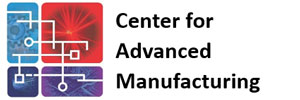Added substance fabricating (AM) forms permit engineers to open the capabilities of grid structures to improve the execution of their items. Cross sections are two or three-dimensional micro-architectures comprised of a arrange hubs and bars, struts, that drastically dimenish weight and hold structural integrity.

There are generally two paths to improving the strength-to-weight ratio of a given part. Through traditional manufacturing, it is accomplished by reducing materials in non-critical areas to optimize the material usage. Through latticing, you are able to remove material in the critical areas of part. Although latticing does reduce the overall strength of the part, the weight savings can improve this strength-to-weight ratio.
Lattices are not only lightweight, but they unlock a large amount of surface area — a key benefit for products that facilitate heat exchanges and chemical reactions.
Cell structure -The most common cell structures include cubic, star, octet, hexagonal, diamond and tetrahedron, to name a few.
Cell size and density - Cell size and density refer to the size of an individual unit cell and how many cells are repeated within a space.
Material selection - Elastomeric or soft materials generally require a smaller and denser cell population to reduce sag during printing.
Cell orientation - The angle a cell is printed at can affect the success of a print because it influences the amount and placement of supports required.
